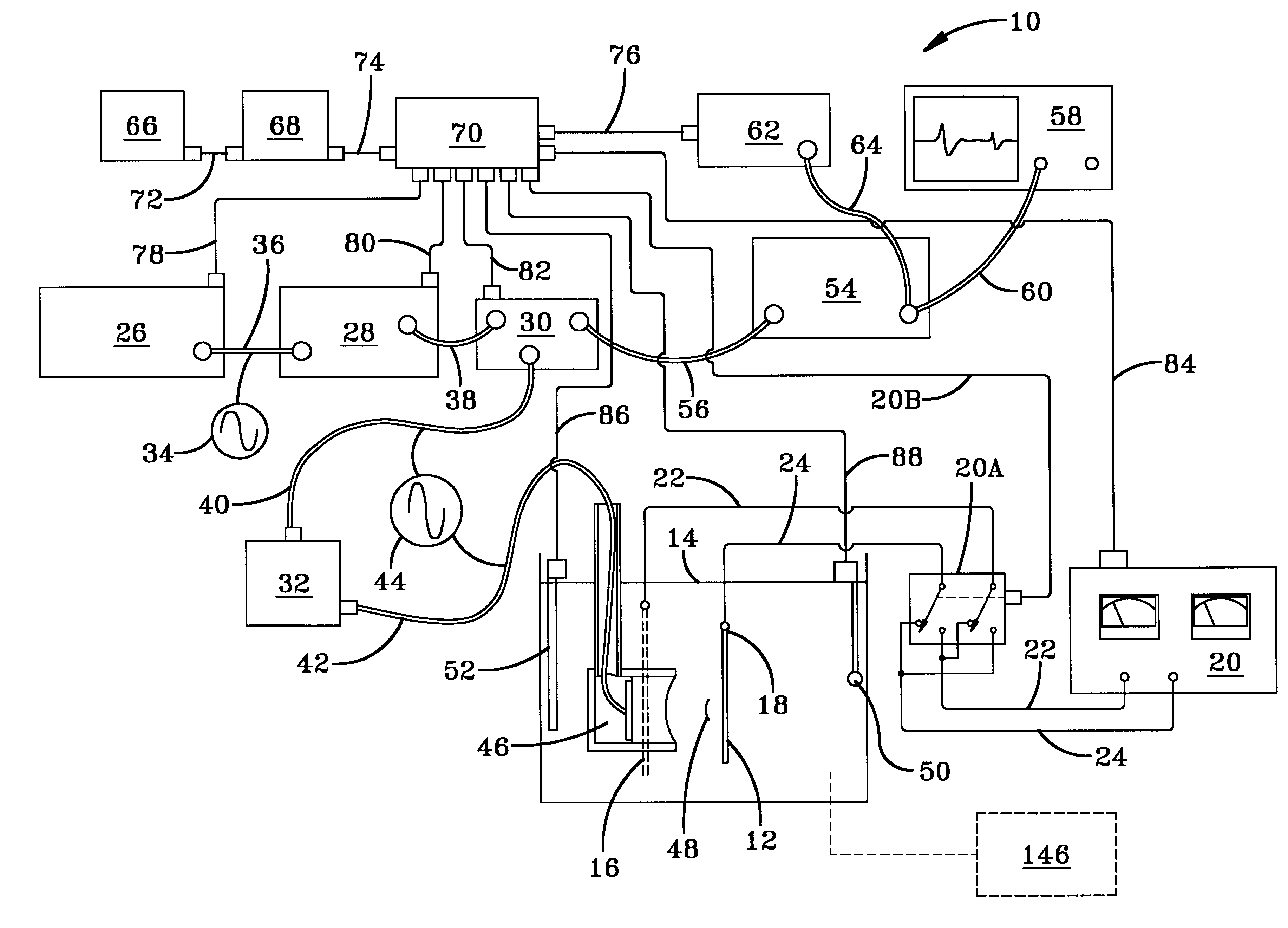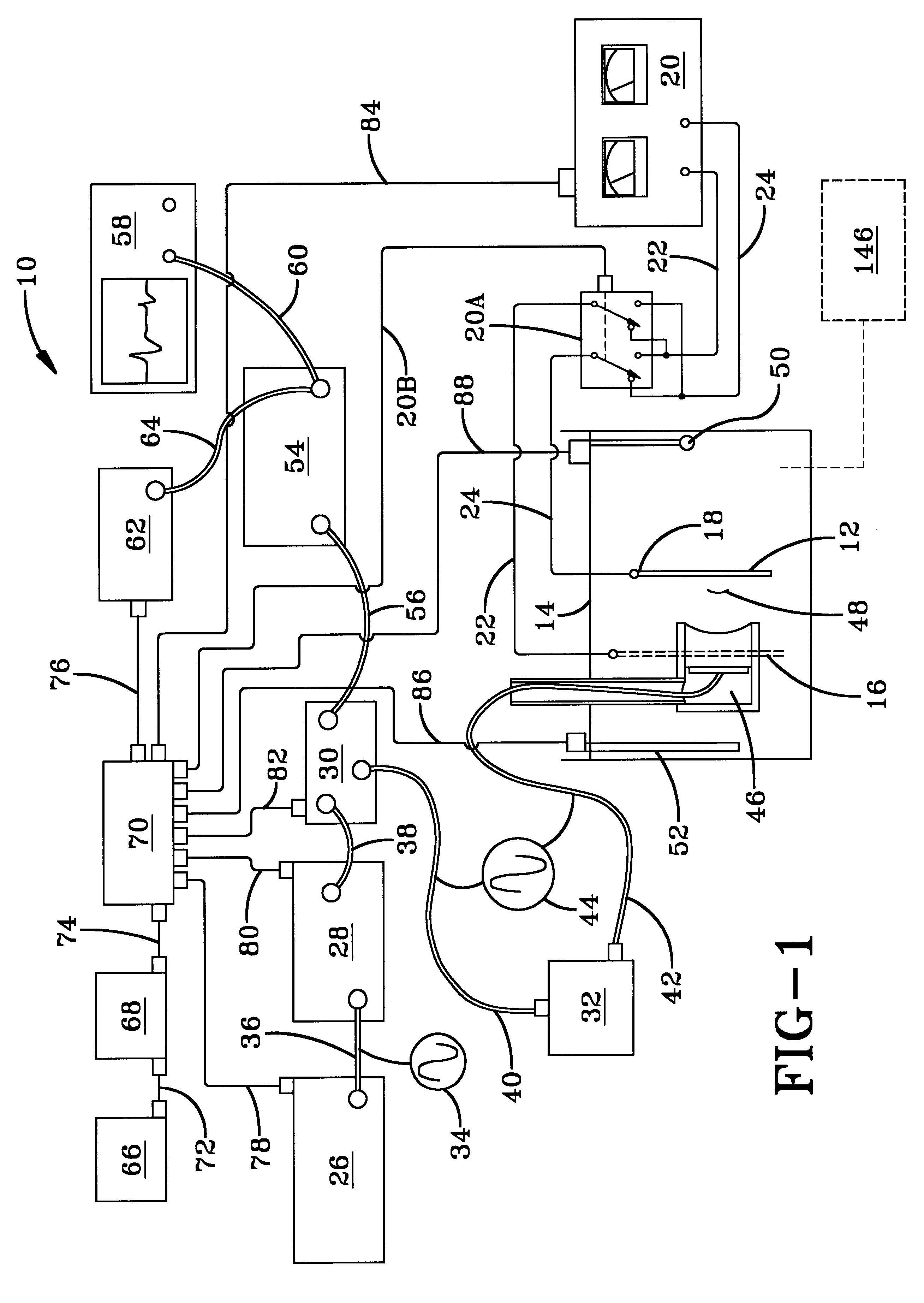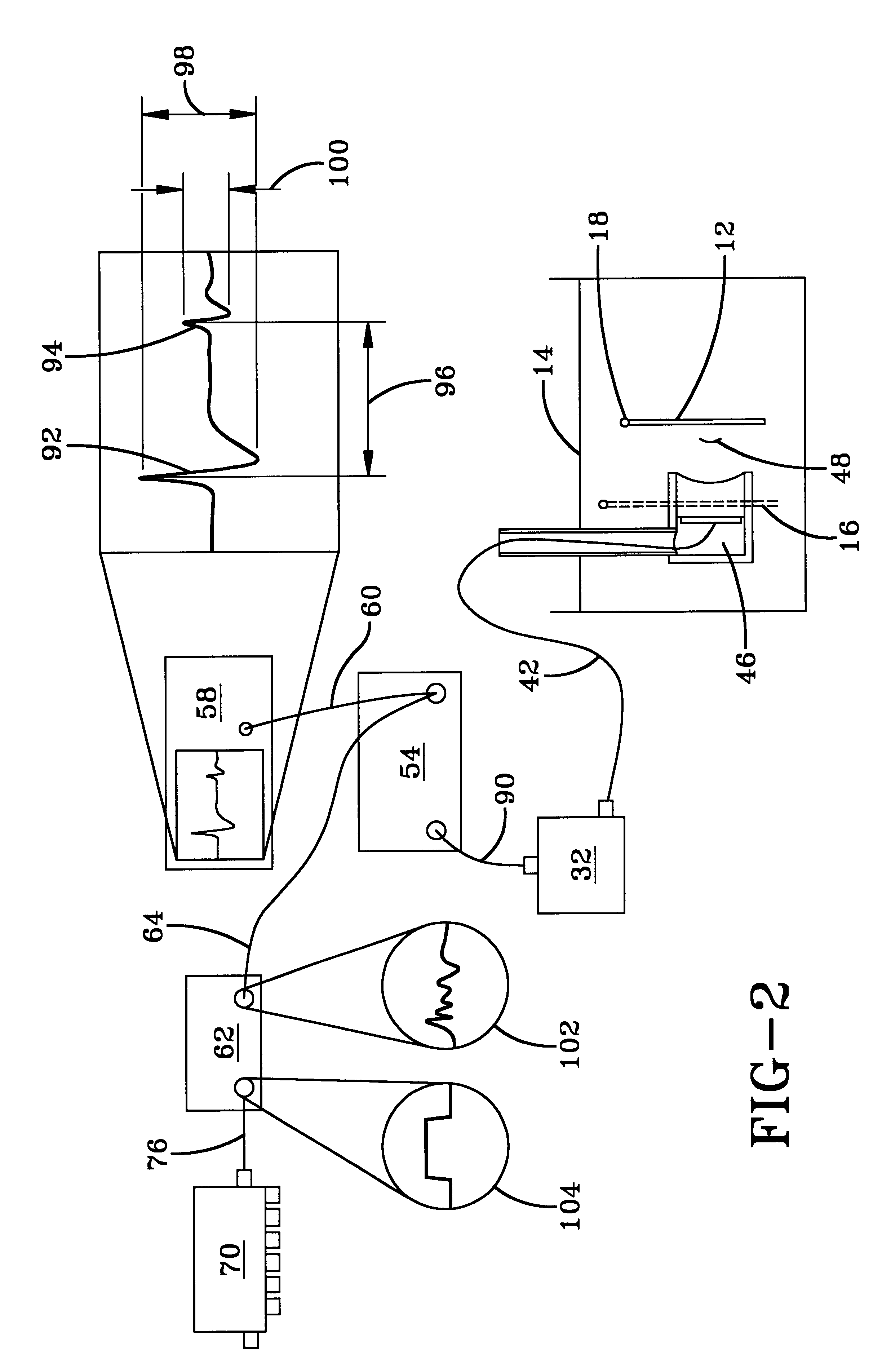Plating processes utilizing high intensity acoustic beams
a technology of acoustic beams and plating processes, which is applied in the direction of nuclear engineering, electric/magnetic/electromagnetic heating, and can solve the problems of unfavorable tooling cost performance, non-uniform thickness of plating, and obstructing plating, etc., to improve the selective plating process, and improve the effect of plating
- Summary
- Abstract
- Description
- Claims
- Application Information
AI Technical Summary
Benefits of technology
Problems solved by technology
Method used
Image
Examples
Embodiment Construction
FIG. 3(A) shows an immersion electroplating process enhanced by using acoustic waves in accordance with the practice of the present invention. An object 12 to be plated and a single physically focused transducer 46 is immersed in a plating tank 14 filled with a plating solution 108. The transducer 46 emits acoustic waves through a buffer 46A to a concave acoustic lens 46B. The beam of waves, generally identified by reference number 48, is focused at an area on the surface of the object 12. The object 12 shown is a simple flat panel of conductive or partially conductive material, such as a circuit board. A simple focused transducer 46 is shown, but a phased array or a plurality of transducers may also be used in a manner to be further described hereinafter with reference to FIG. 6. An electrical conductor 42, previously described in FIG. 1 as a coaxial cable, is connected to the back side of the transducer element 46C. The ground or return side of transducer 46 is connected to the gr...
PUM
| Property | Measurement | Unit |
|---|---|---|
| frequency | aaaaa | aaaaa |
| power | aaaaa | aaaaa |
| output impedance | aaaaa | aaaaa |
Abstract
Description
Claims
Application Information
 Login to View More
Login to View More - R&D
- Intellectual Property
- Life Sciences
- Materials
- Tech Scout
- Unparalleled Data Quality
- Higher Quality Content
- 60% Fewer Hallucinations
Browse by: Latest US Patents, China's latest patents, Technical Efficacy Thesaurus, Application Domain, Technology Topic, Popular Technical Reports.
© 2025 PatSnap. All rights reserved.Legal|Privacy policy|Modern Slavery Act Transparency Statement|Sitemap|About US| Contact US: help@patsnap.com



